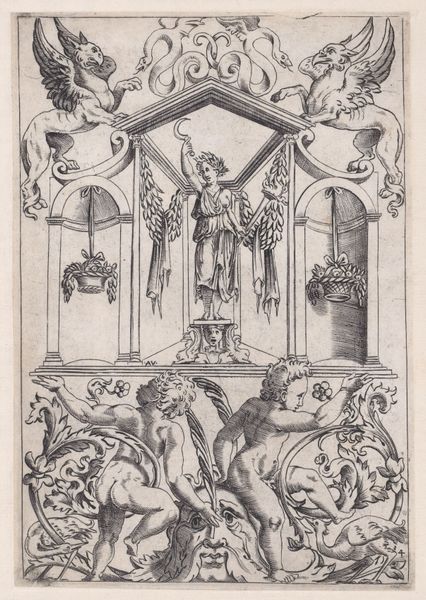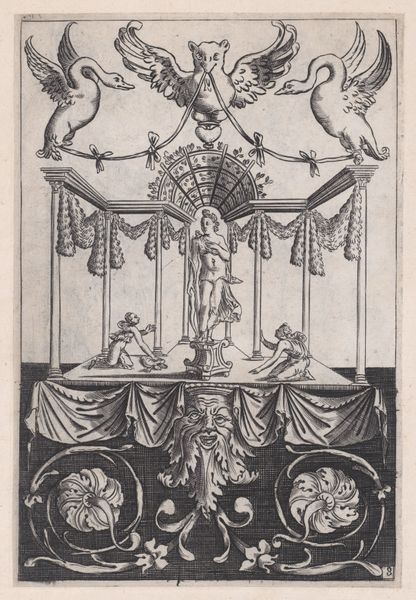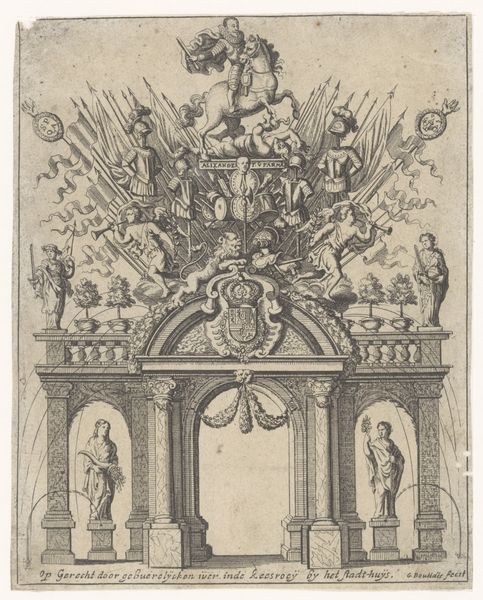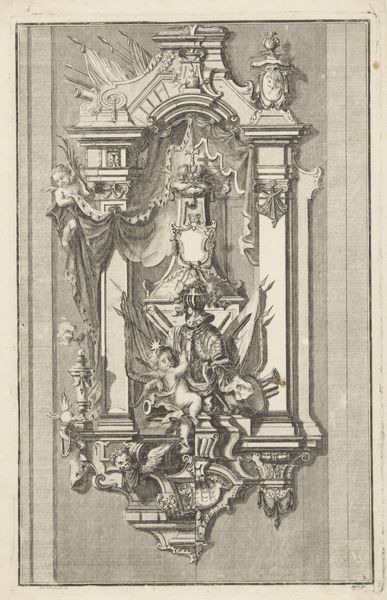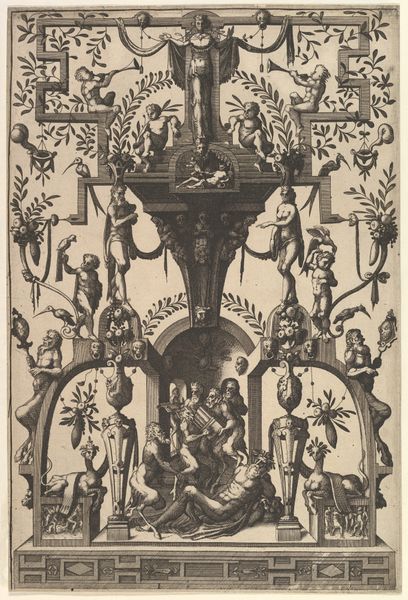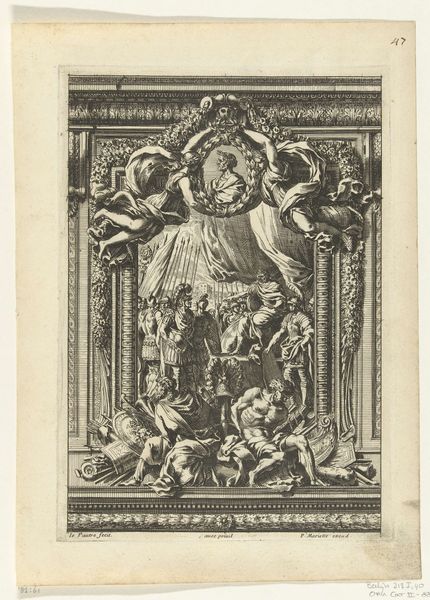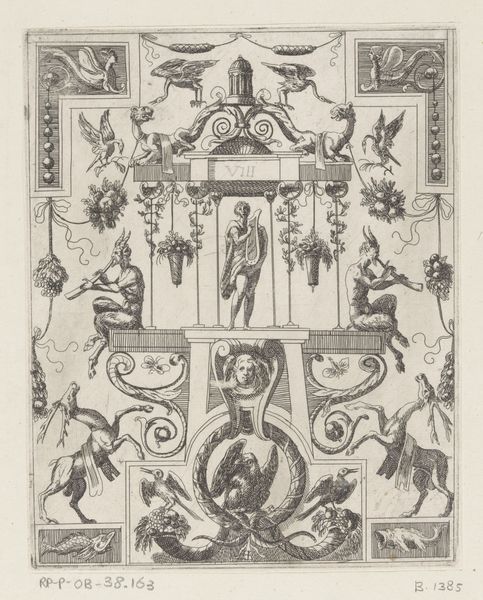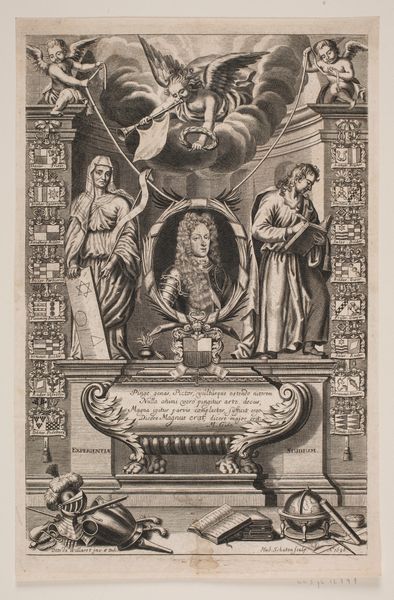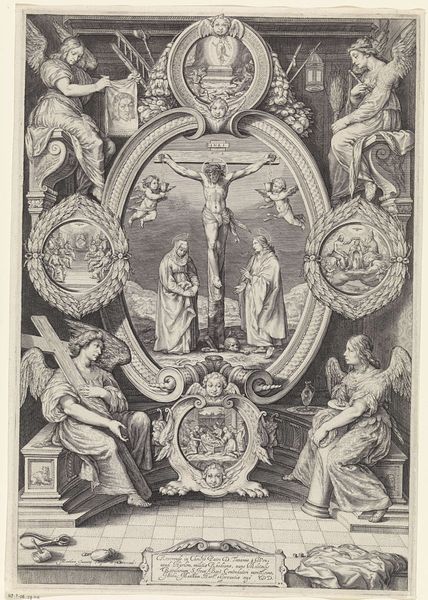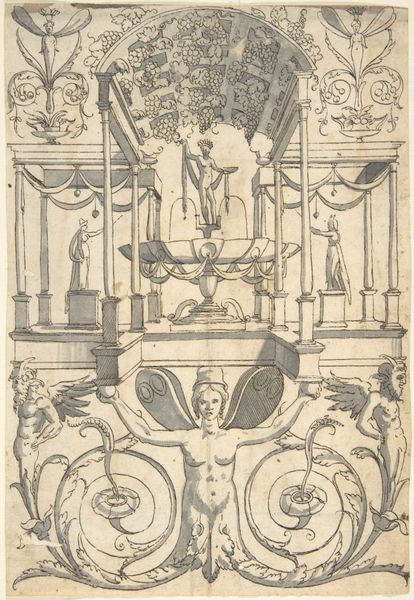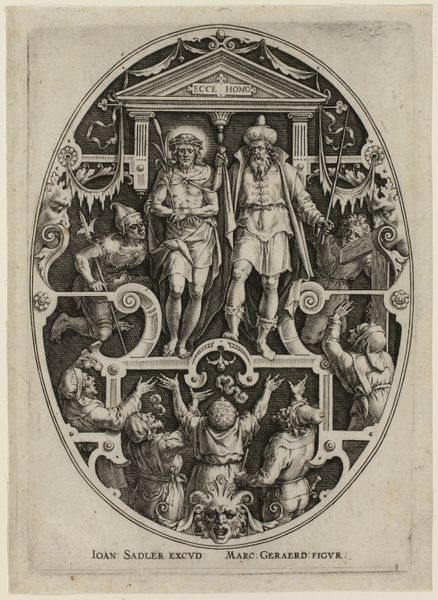
drawing, print, engraving
#
drawing
#
allegory
# print
#
figuration
#
11_renaissance
#
italian-renaissance
#
engraving
Dimensions: 7 7/8 x 5 7/16 in. (20.0 x 13.8 cm)
Copyright: Public Domain
Curator: Agostino Veneziano created this print, "Ornamental Panel," sometime between 1514 and 1536. It's an engraving, currently housed at the Metropolitan Museum of Art. Editor: It’s visually dense. At first glance, I see a figure presented within this bizarre architectural framework, a really elaborate kind of stage. There's a weightiness, almost like the classical figures below are physically holding up this entire scene. Curator: Indeed. Consider the labour involved. An engraving such as this necessitated meticulous skill and time. It demonstrates a complex understanding of materials – the paper, the ink, the metal plate used for the engraving. The pressure and repetition…these determined the work. Editor: The classical imagery speaks volumes. The female figure could be Venus, goddess of love, given the flowers and graceful pose, though the moon in her left hand gives me pause. And those grotesque figures supporting the upper register certainly reference classical architectural ornament, recalling ancient temples and triumphal arches. What kind of message is being conveyed, recycling these cultural artifacts? Curator: The printing process enabled wider access. Ornamental prints such as this one democratised classical styles previously reserved for wealthier patrons. This print might've served as inspiration for artisans crafting furniture or other decorative objects, widening artistic consumption. Editor: But there's such a tension between the refined, idealised figure above and those rather wild, earthly characters below. That central, foliate mask seems to preside over all the activity, watching or perhaps judging. Are we meant to read an allegory about order and chaos, reason and instinct? Curator: It could certainly invite interpretation. The appeal lay, partly, in the technical ability to replicate classical form, disseminated widely. Printmaking introduced an element of standardization while stimulating innovation in workshop practices, transforming artistic expression across media. Editor: Absolutely. And I find that the blending of refinement and the grotesque continues to capture the eye. It embodies the complexities and ambiguities of Renaissance aesthetics so concisely. A small but rich display of cultural tension and material practices. Curator: Precisely. Viewing the engraving today reveals connections between technique and design that broaden one's perception of art historical materials. It makes a case for studying production within cultural economies.
Comments
No comments
Be the first to comment and join the conversation on the ultimate creative platform.
